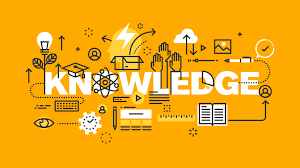It has been often seen that students learn and grasp better when they first access what they already know—and this plays a significant role in improving their academic knowledge. Therefore, we at TRS believe that activating prior knowledge is essential in students’ understanding because it allows them and helps make connections to new information.
Failure to associate and engage with texts is a concern often noted at the school level, where students are expected to read independently. This issue was addressed by teaching students the technique of activating prior knowledge in the context of the text.
According to research, it was assessed that the students who became competent to use the previous knowledge activation strategy regularly performed better than students who could not do so. Prior knowledge activation is looked upon as an approach backed by research that can improve students’ comprehension and memory. There are various strategies for supporting students in activating prior knowledge. Some of these strategies are :
- Reflection and recording
- Interactive discussion
- Answering questions
- K-W-L
- CONTACT-2
- Interpretation of topic-related pictures
Let us acquaint ourselves with two strategies and how they help students activate prior knowledge.
- Reflection and recording:
This is one of the most straightforward strategies to activate students’ prior knowledge. Here the teachers can ask the students to think and write down what they already know about the topic. This helps the students to proactively think about everything they know about the topic, increases the student’s interest in the topic, and also improves the level of student engagement.
There have been several research studies to prove the efficiency of reflection and recording. This strategy significantly helps the students organize prior knowledge in semantic maps and diagrams. An extension to reflection and recording is when students work in groups and share their background knowledge with peers.
Let us take an example to understand this strategy.
Learning objective: To understand Indian culture and the festivals celebrated across India.
For the learning mentioned above, the teachers could ask the students to think about the festival and record on a sheet of paper what they know and can recall about a particular festival.
As per brain science, this strategy also activates long-term memory and several neural networks. A further extension to this activity is when the students get into small groups of 4-5 each and share what they know about the festival with their peers.
But like every other strategy, this, too, is bound by some limitations. In a diverse classroom where students come from various communities, each child has prior knowledge about festivals in different cultures. In that case, these students who cannot recall prior knowledge fail to associate with the topic at hand and feel less competent, which is detrimental to self-efficacy. Therefore, teachers have to be mindful of their diverse backgrounds while implementing such strategies.
Another important strategy in activating prior knowledge in students is that of KWL.
2. KWL
KWL stands for “What I Know,” “What I Want to Know,” and “What I Learned.” KWL process is often depicted as follows:
KWL increases the retention of reading material, improves students’ ability to make connections to various types of information, and even garners a sense of enthusiasm. KWL allows the students to interlink and activate multiple neural pathways, thus strengthening cognition. Let us take another example to understand this strategy in detail.
Learning Objective: Understand the lifecycle of a butterfly.
A student filled out a KWL chart would look something like this:
Limitations:
Some limitations or disadvantages of using KWL are that the strategy is complex for students with no prior knowledge and fails to entice and bring about enthusiasm for such students for the topic at hand.
Students learn better when they first access what they already know—and this plays a big role in improving their academic literacy. Activating prior knowledge means both eliciting from students what they already know and building initial expertise that they need to access upcoming content. It’s up to the educators to facilitate this process by developing relationships with the students so that the teachers would learn what the kids already know and ensure that they feel comfortable sharing it.
